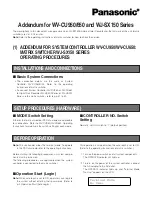
Although the following illustration and example uses routers in the configuration, any device (router or
switch) can be used.
Note
Figure 9: Default MSDP Peer Scenario
Device B advertises SAs to Device A and Device C, but uses only Device A or Device C to accept SA messages.
If Device A is first in the configuration, it will be used if it is up and running. Only when Device A is not
running will Device B accept SAs from Device C. This is the behavior without a prefix list.
If you specify a prefix list, the peer will be a default peer only for the prefixes in the list. You can have multiple
active default peers when you have a prefix list associated with each. When you do not have any prefix lists,
you can configure multiple default peers, but only the first one is the active default peer as long as the device
has connectivity to this peer and the peer is alive. If the first configured peer goes down or the connectivity
to this peer goes down, the second configured peer becomes the active default, and so on.
Related Topics
Configuring a Default MSDP Peer, on page 192
Example: Configuring a Default MSDP Peer, on page 210
MSDP Mesh Groups
An MSDP mesh group is a group of MSDP speakers that have fully meshed MSDP connectivity between one
another. In other words, each of the MSDP peers in the group must have an MSDP peering relationship (MSDP
connection) to every other MSDP peer in the group. When an MSDP mesh group is configured between a
group of MSDP peers, SA message flooding is reduced. Because when an MSDP peer in the group receives
IP Multicast Routing Configuration Guide, Cisco IOS XE Release 3SE (Catalyst 3650 Switches)
180
OL-29890-01
Configuring MSDP
MSDP Mesh Groups
















































